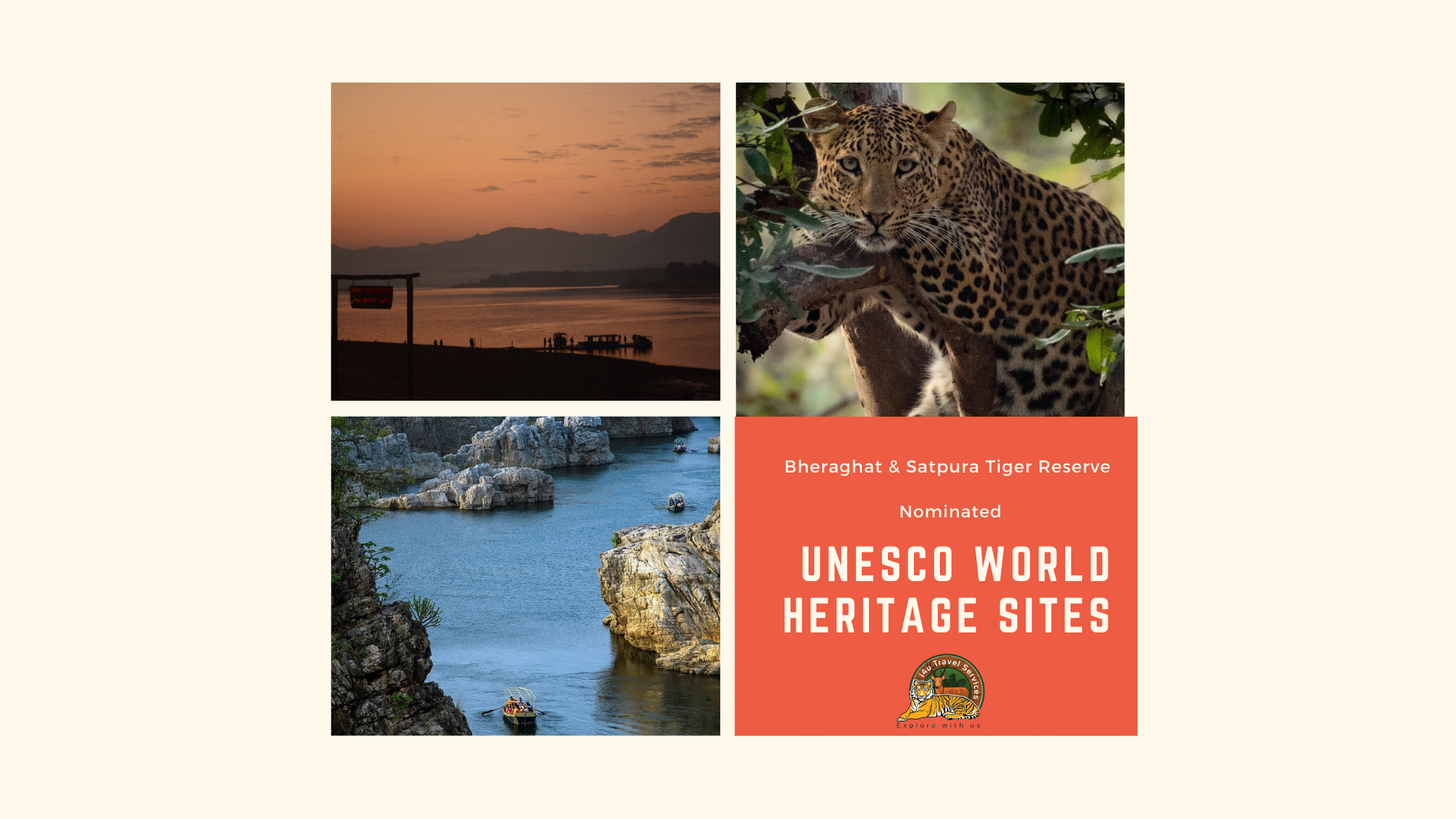
Euphoria prevailed in Madhya Pradesh as two of it’s prestigious natural destinations – Satpura National Park, located in the Pachmarhi Bio Sphere Reserve of Hoshangabad district and Bheraghat – Lamheta Ghat in the Narmada Valley, located in Jabalpur, were nominated into the tentative list of UNESCO’s World Heritage Sites.
Out of the submitted nine sites, six sites have been accepted into the UNESCO tentative list, as declared by the Union Culture Minister, Mr. Prahlad Patel, who also hails from Madhya Pradesh.
Incidentally, Madhya Pradesh is the only state which can boast of it’s two sites being selected in this category.
The other selected nominations are –
the Kanchipuram temple group in Tamil Nadu, serial nomination of Maratha Military Architecture (forts) in Maharashtra, Hire Benakal megalithic site in Karnataka and the Ganga ghat (riverfront) in Varanasi, Uttar Pradesh.
Madhya Pradesh is already the cradle for three UNESCO World Heritage Sites – The Khajuraho Group of Temples in Chhatarpur, The Rock Paintings of Bhimbetka and Buddhist site of Sanchi, both in the Raisen district.
With these two new nominations, Madhya Pradesh now has six nominations on the tentative list, including the medieval town of Orchha, which joined the tentative list in 2019, still awaits graduation into the World Heritage Sites list along with the historical monument town of Mandu in Dhar, the historic ensemble of Orchha in Niwari district, Indore as part of the ‘Sites of Satyagraha in India’ and Chanderi in Ashok Nagar as part of the iconic saree weaving clusters of India.
The Principal Secretary of Tourism and Culture, Madhya Pradesh, Mr Sheo Shekhar Shukla expressed happiness over the inclusion of two sites from the state in the UNESCO world heritage tentative list. His team are excited & preparing the nomination dossiers of these two sites which will soon be submitted to UNESCO as per the process. Only sites of outstanding universal value are included in the tentative lists.
Analogy for selection of World Heritage Sites
As per the UNESCO world heritage selection process, after a site is included in the tentative list – which is the first step in the process, an exhaustive nomination file/dossier is to be submitted to the World Heritage Centre (WHC) for review. Once the file is complete, the WHC sends it to appropriate advisory bodies for evaluation.
Since the two sites nominated from Madhya Pradesh are natural sites, the completed files will be sent for independent evaluation to the International Union for Conservation of Nature (IUCN), which will further provide the World Heritage Committee with its evaluation of the nominated sites. The final declaration of World Heritage sites is based on this evaluation.
About the nominated sites
According to the UNESCO website nomination details, Bhedaghat, often referred to as the Grand Canyon of India, is a town around 20km from Jabalpur, where River Narmada flows through a gorge. Dhuandhar waterfall at Bhedaghat gives a panaromic view of smoke (mist) coming out of the river, hence the waterfall is named as ‘Dhuadhar’. River Narmada narrows down on its way through marble rocks and plunges in a waterfall, giving out the appearance of a unique smoke cascade. Several dinosaur fossils have been found in the Narmada Valley, particularly in the Bhedaghat-Lametaghat area of Jabalpur. In 1828, the first Dinosaur fossil (The Holotype specimen of the Sauropod Dinosaur – Titanosaurus Indicus ) was collected from Lameta river bed by the famed British administrator William Sleeman.
Bhedaghat-Lametagha is a captivating region in the Narmada Valley where the culturally much-venerated river splits a magnificent marble mountain in its course, revealing fascinating geological metamorphism, in addition to some truly unbelievable rock formations. The result is a visually ancient appeal that often even draws film crews.
The Satpura Tiger Reserve located in the Satpura Maikal ranges is one of the major geographical plateaus of India, located in the Hoshangabad district. It is part of the Deccan Bio-Geographic zone of India & a part of the Pachmarhi Bio Sphere. Satpura Tiger Reserve’s environment stands out by its exquisite natural beauty and showcases the importance of tourism of this place. Satpura, meaning ‘SEVEN FOLDS’, forms a watershed between Narmada and Tapti River and is triangular in shape. It is one of the oldest forest reserves with a well-established tradition of scientific management of forests.
Satpura Tiger Reserve is a prime example of the Central Indian Highlands ecosystem. It is a unique area of high natural and diverse land resource values. The habitat is also one of the globally significant landscapes in terms of tiger conservation. It has the largest tiger-occupied forest, and it also has one of the largest tiger populations in Madhya Pradesh.
WhatsApp us